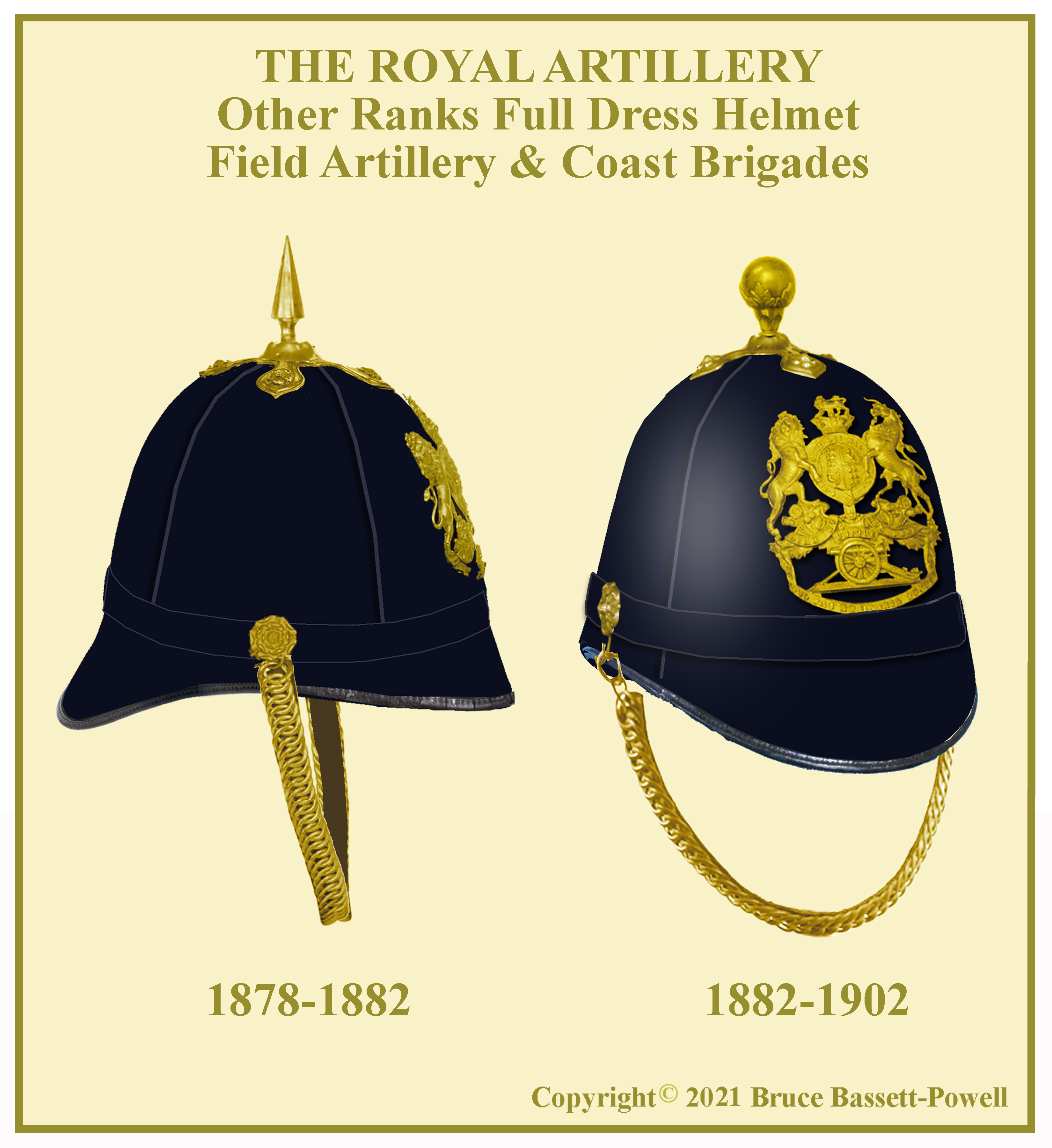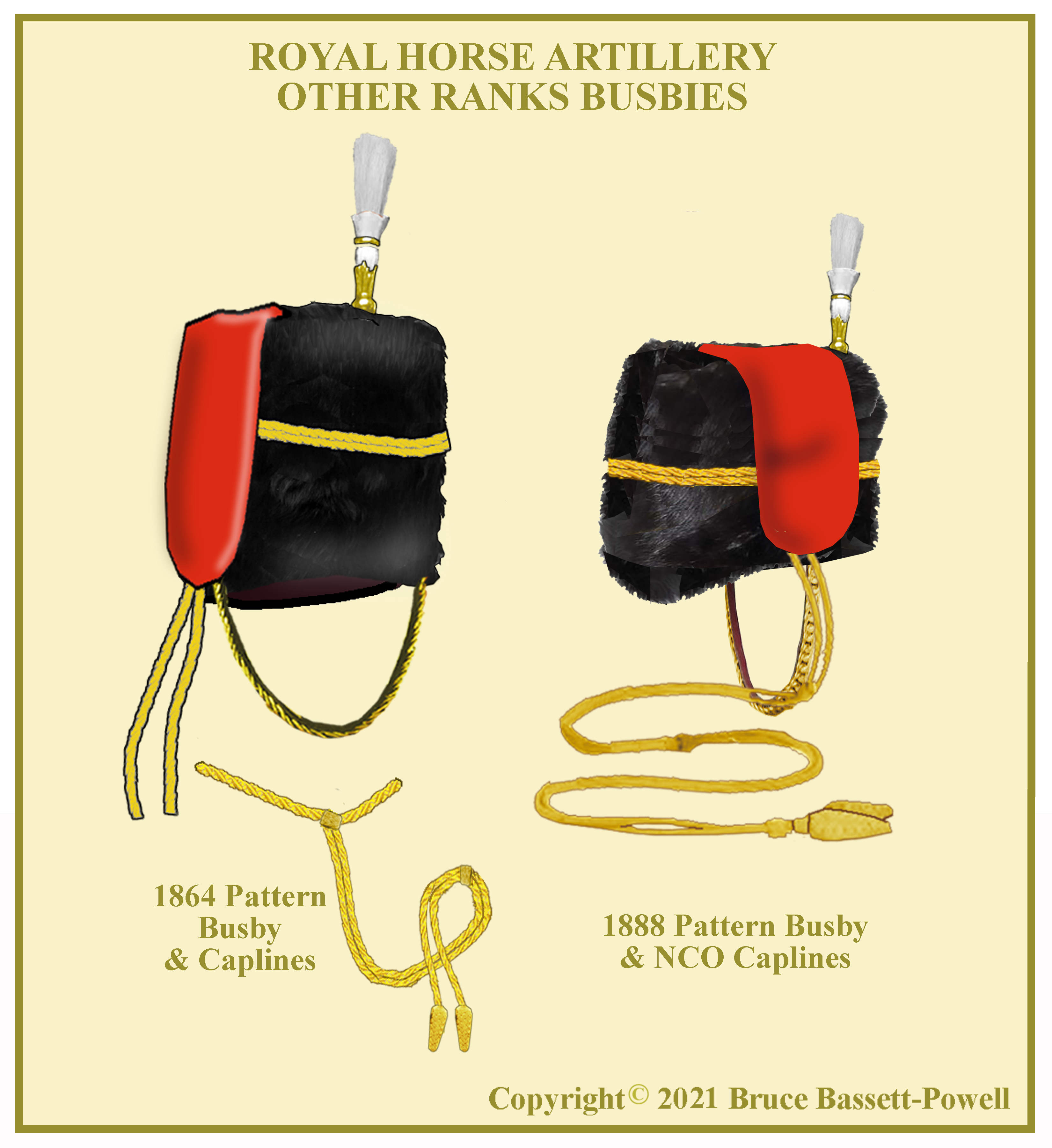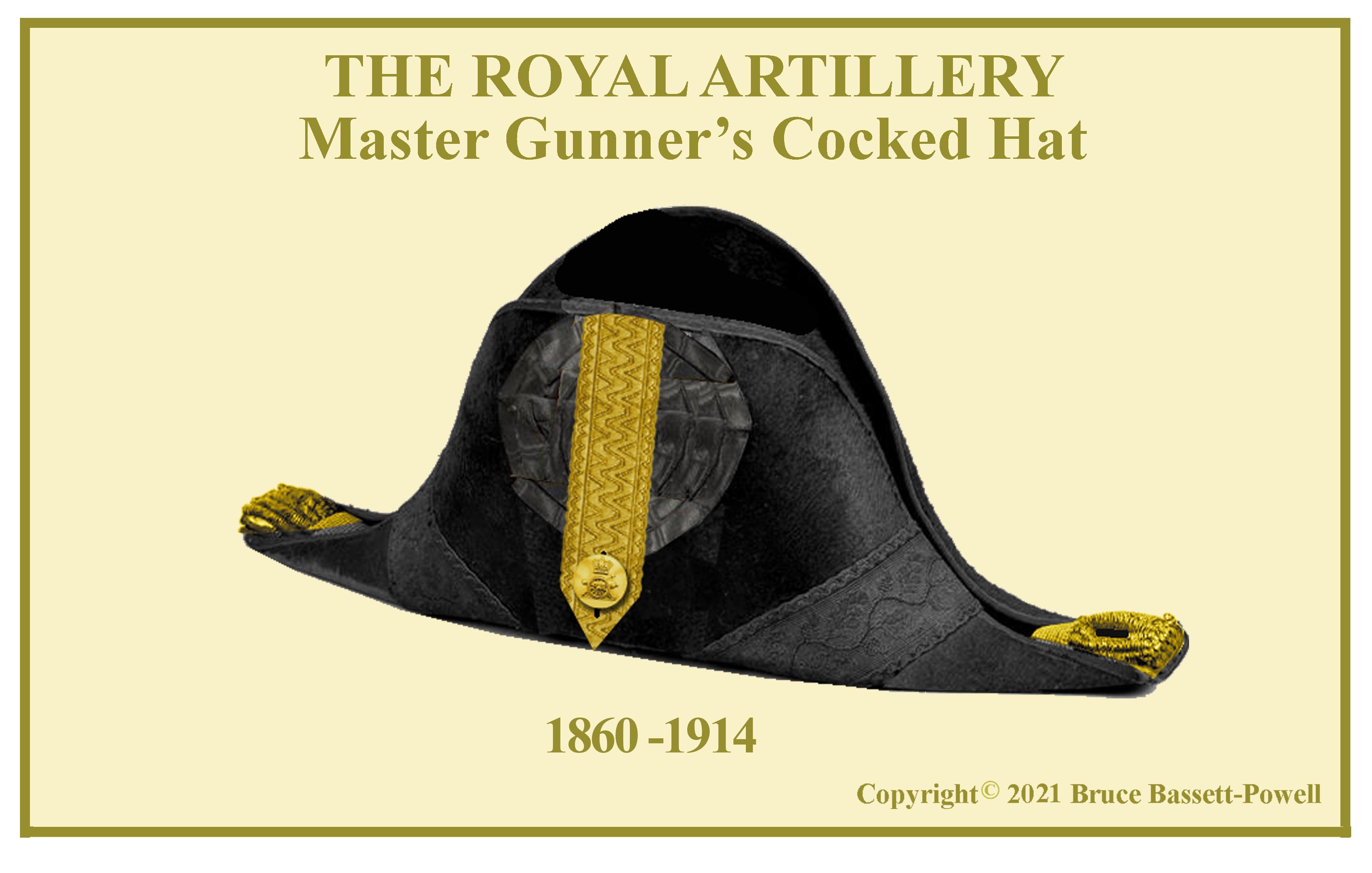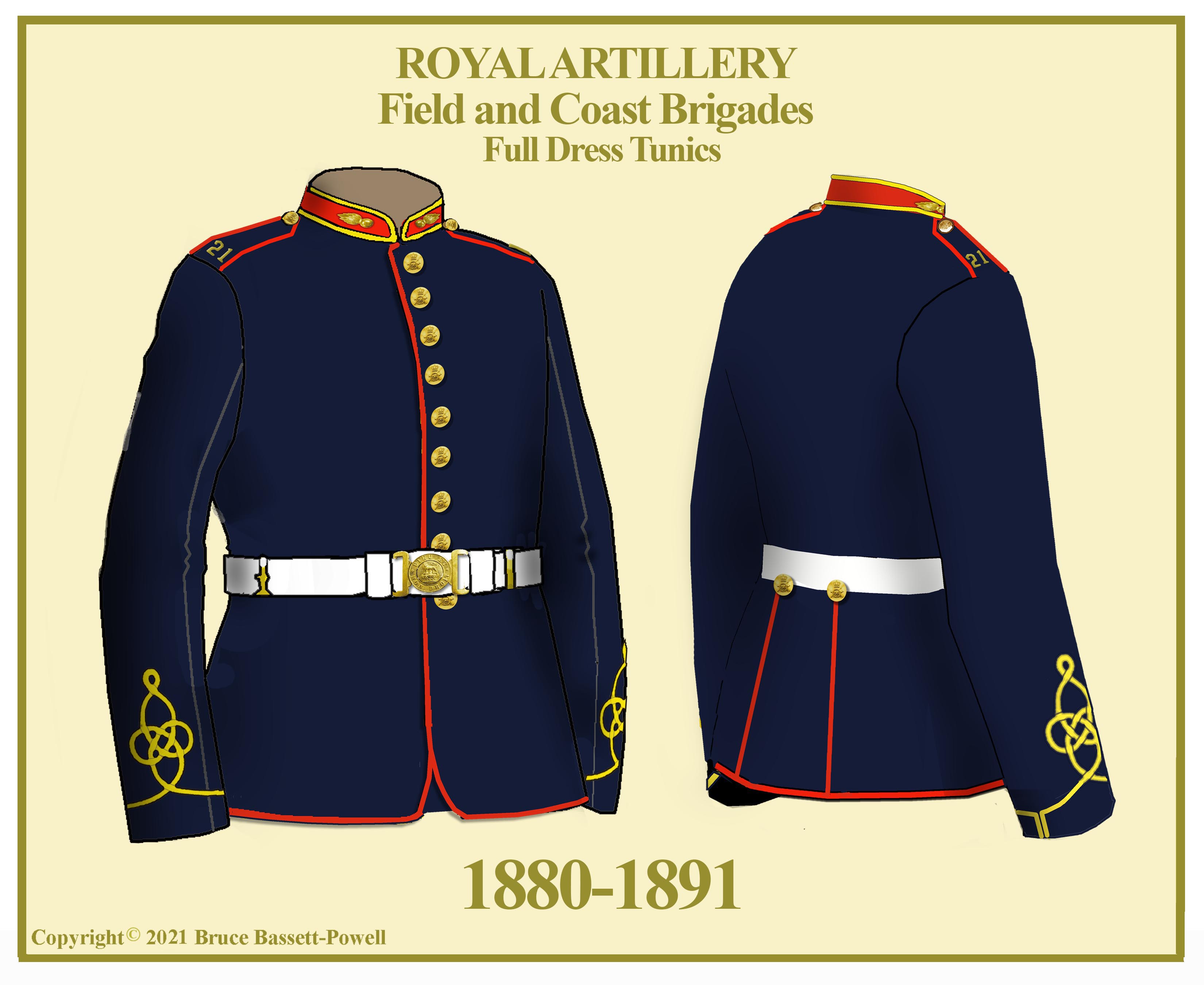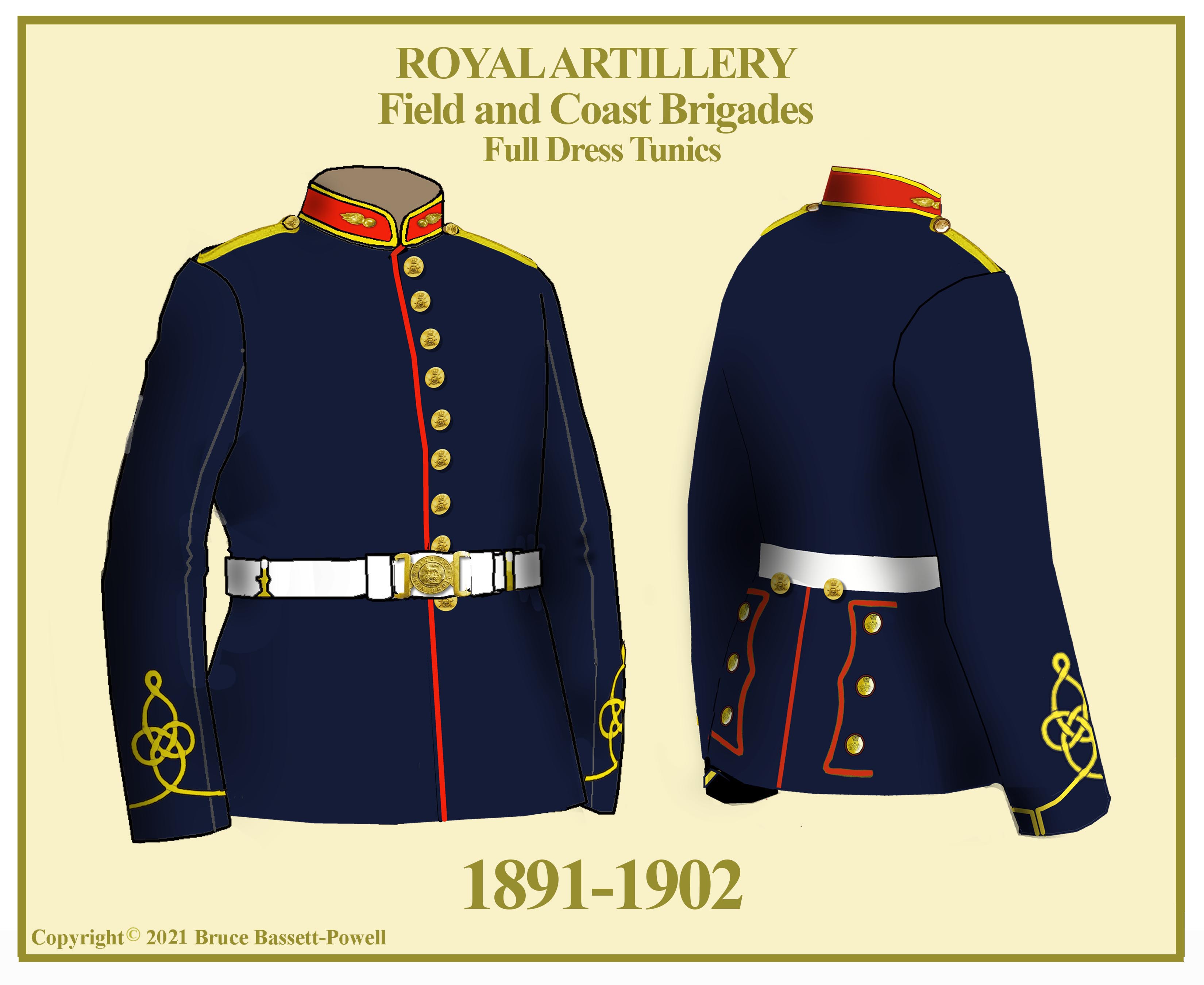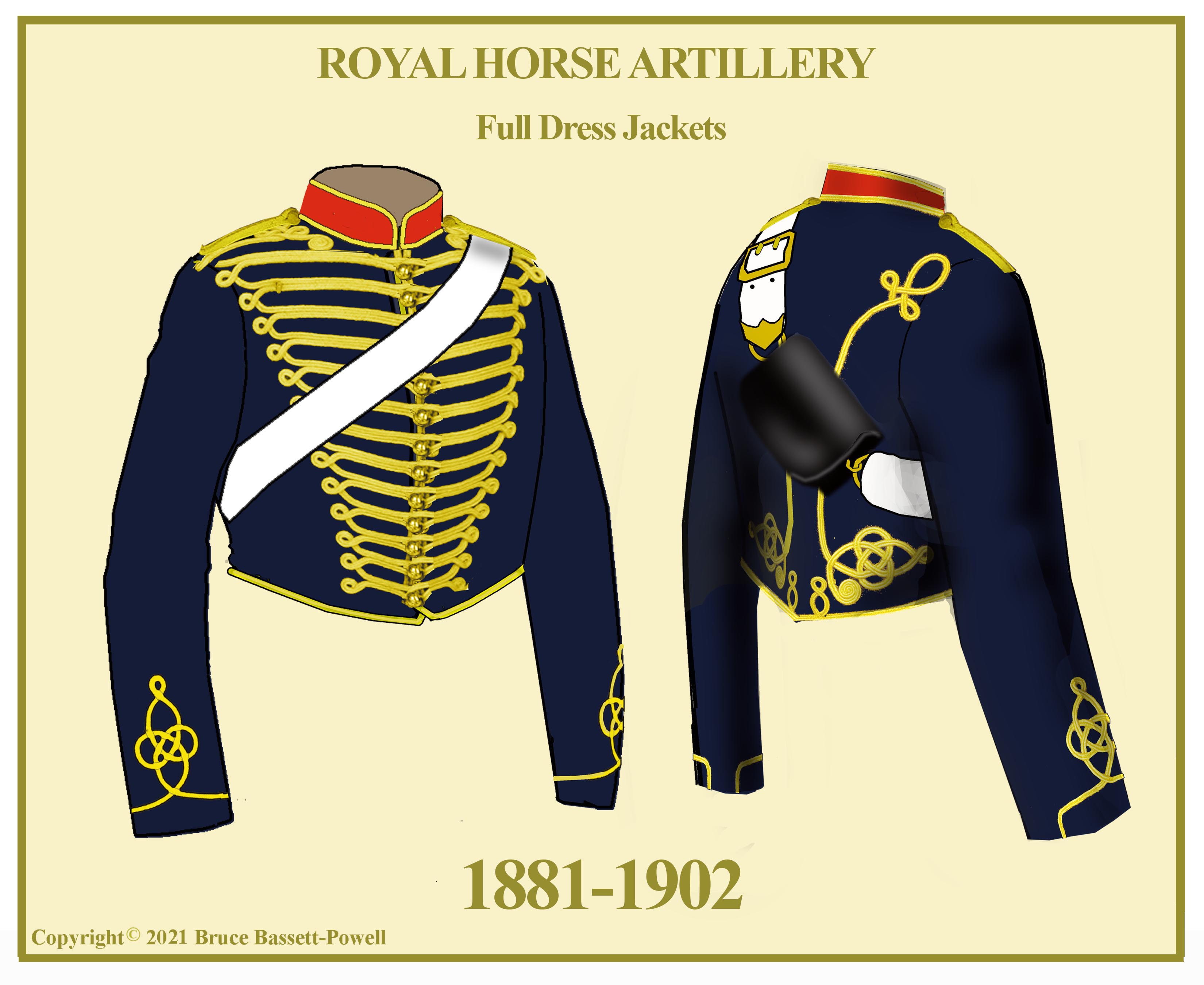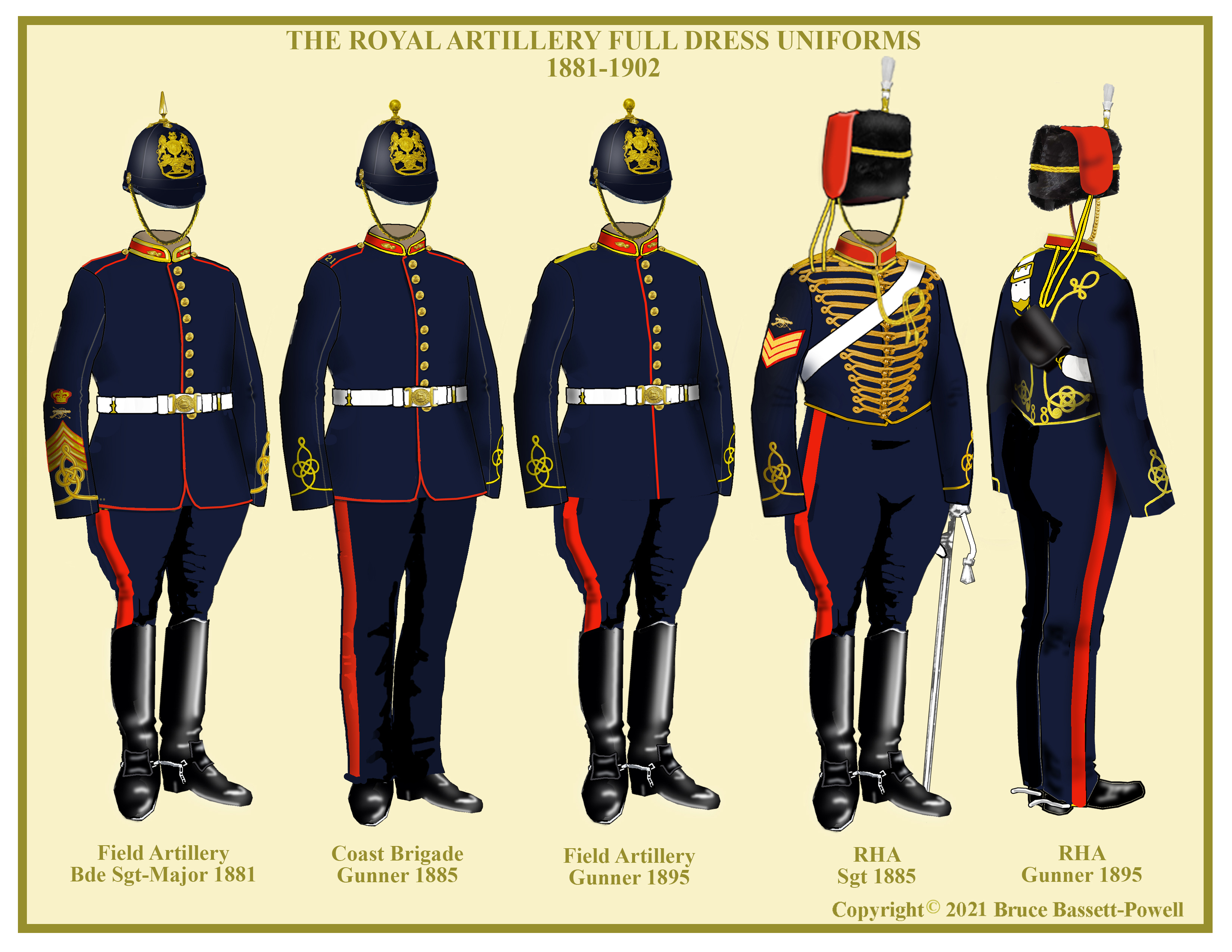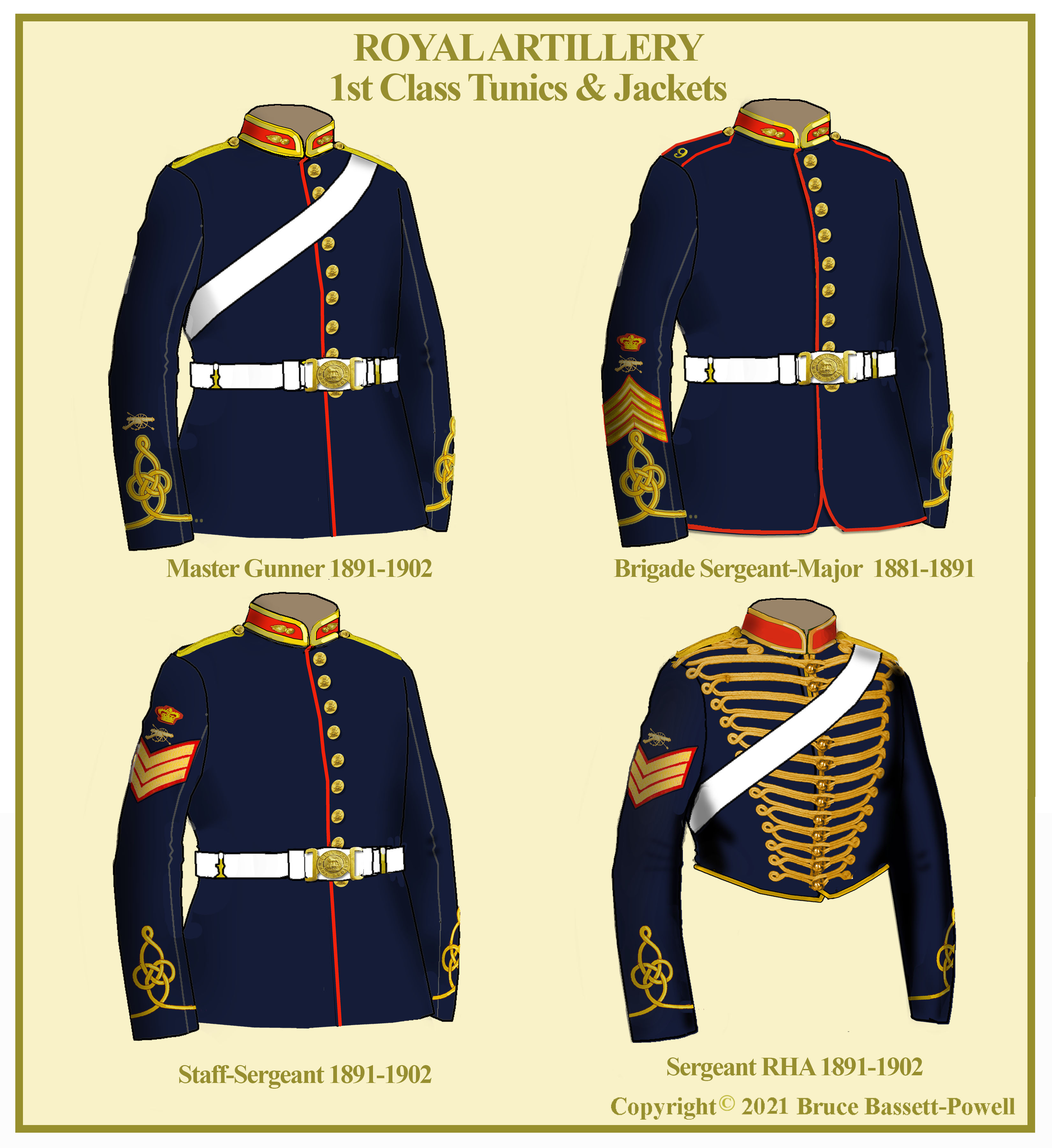UNIFORMS, ARMS & EQUIPMENT - ROYAL ARTILLERY
THE ROYAL REGIMENT OF ARTILLERY 1881-1902
OTHER RANKS FULL DRESS
THE HOME SERVICE HELMET
Until 1878, the rank and file of the Royal Field and Garrison Artillery had worn the busby like their officers. In 1878, they were also ordered to wear the cloth helmet then being issued to most of the infantry. It lacked the pointed peak and gilt bindings of the officers’ helmets. It had black leather binding on the rounded front and rear peaks (the latter not as deep as the officer’s version) and the rear seam was plain. The regimental badge was identical to the officers except in brass (and ever so slightly cruder). At first, the helmet was fitted with a spike, but as with other units a ball was safer when handling horses and the ball replaced the spike in 1881. It is interesting to note that photos of gunners taken at home after the Egyptian Campaign in 1882, shows them still in spiked helmets.
THE RHA BUSBY
The Royal Horse Artillery busby for other ranks was the same as hussars and like the officers lacked the lacing on the busby bag. Also in in line with the hussars, the busby height was lowered in 1888.
MASTER GUNNER
Alone amongst the Warrant Officers was the cocked hat worn by the Master Gunner. Classed as Warrant Officers in 1881, there were apparently 131 of them at that time. Their tasks involved the overall supervision of Brigade and Divisional Depots and the inspection of the guns. The hat was quite plain with gold bullions on the ends and a plain 1 5/8 inch wide lace down the right side above a black cockade.
FULL DRESS TUNICS & JACKETS
Royal Field and Royal Garrison Artillery
The tunic worn by other ranks was, essentially the same as had been laid down in 1860. It was dark blue with scarlet collar. It was edged in front and around the skirts in scarlet cloth. The two rear skirt seams were also piped in scarlet. There were nine buttons down the front and two at the waist on the rear. A small button secured each shoulder strap. The collar had a brass grenade on each side (authorised in 1880) and was piped all round in yellow cord. The shoulder straps were edged in scarlet with the battery number in brass for Field Artillery and woven cloth for Garrison batteries. All shoulder titles were ordered to be in brass in 1890, however the change in unform in 1891 eclipsed that.
In 1891 the tunic was redesigned to conform with other branches. The tunic front was now squared off and edged with scarlet cloth and the rear skirts had three pointed dark blue flaps on each side edged scarlet while the centre vent was also piped scarlet.
The quality of the tunic also conformed with the rest of the army. Master Gunners Class 1 of Coast Brigades had been Warrant officers since 1861 and presumably were dressed according to their rank. When the Warrant Officer status was greatly expanded, first in 1879 and again in 1881, for the Royal Artillery, they included Master Gunners Class 2, Brigade Sergeant-Majors, Brigade QMs, Trumpet, Farrier, collarmaker and Wheeler Sergeant-Majors wore First Class tunics (of somewhat better quality) but the lace on collar and cuffs was gold with gold braid tracing around it. The Battery Sergeant-Major and all ranks below had gold lace on collar and cuffs without the tracing braid. Corporals, Bombardiers and all other ranks wore standard yellow cord.
The Royal Horse Artillery
The Royal Horse Artillery other ranks wore a jacket almost identical to that of officers. Instead of the 1 3/8 inch gold cord of the officers, their cording was 5/8 inch yellow worsted cord. There were also only 13 or 14 ball buttons instead of 18. Sergeants and above had 5/8 inch gold cord on their jackets and the Warrant officers jacket quality and lace on collar and cuffs conformed with the Field and Garrison Artillery. The Royal Horse Artillery other ranks have never worn grenades on their collars.
The trousers and breeches were dark blue with a 1 ¾ Inch scarlet stripe down each side. Royal Horse and Field Artillery wore standard knee boots while garrison artillery wore trousers. For dismounted duties the RHA wore cavalry overalls.
BADGES OF RANK AND TRADE


